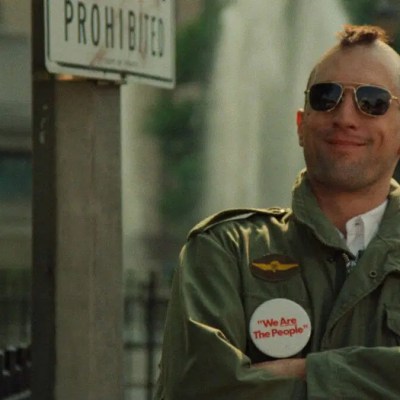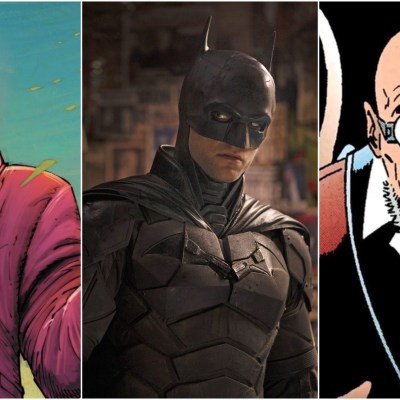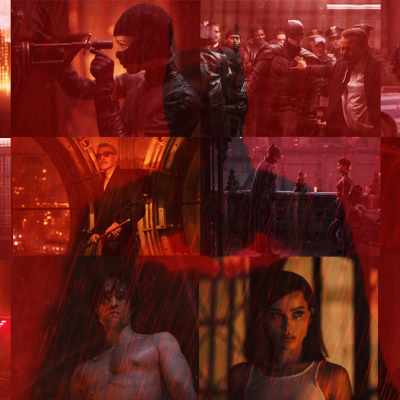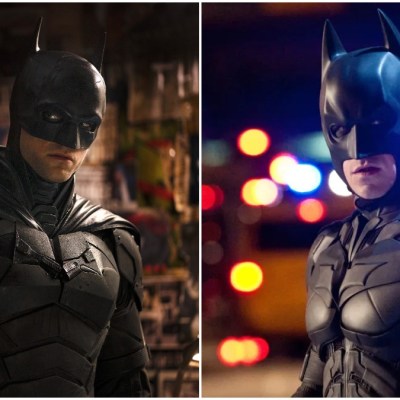The Batman Would Not Exist Without These Noir Movies
From Chinatown to The Conversation, and Taxi Driver to Seven, we examine the neo-noir influences on Matt Reeves’ The Batman.
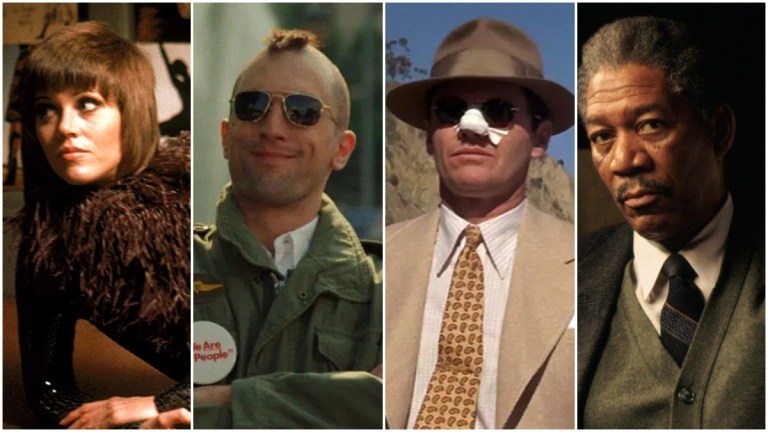
This article contains massive The Batman spoilers.
The cops don’t look at him like other Batmans. When Robert Pattinson’s Caped Crusader enters a crime scene that wouldn’t be out of place in a David Fincher movie, the Gotham City Police Department neither assess this interloper with the kind of relief we see from civilians’ reactions to The Avengers, nor even the type of awe and hope glimpsed in Christopher Nolan’s The Dark Knight.
They look at the Batman like a freak—just one who happens to be surprisingly good at solving crimes. That’s one of the more amusing innovations in Matt Reeves and Pattinson’s interpretation of the Batman mythology. At its heart, this isn’t necessarily a superhero movie or even an action adventure—despite a few nominal action sequences. It’s a downbeat detective story, far more influenced by the second wave of noir cinema (or “neo-noir”) which came about in the 1970s than it is anything done by Richard Donner in that same decade.
Reeves hasn’t been coy about his influences on The Batman either. They can be felt in almost every frame of the new film, which wears its inspirations on its sleeves, and which ultimately prove this is a genuine crime drama that’s almost as cynical and fatalist as its touchstones. Below we’ve gathered all the major cinematic classics that Reeves and company pulled from.
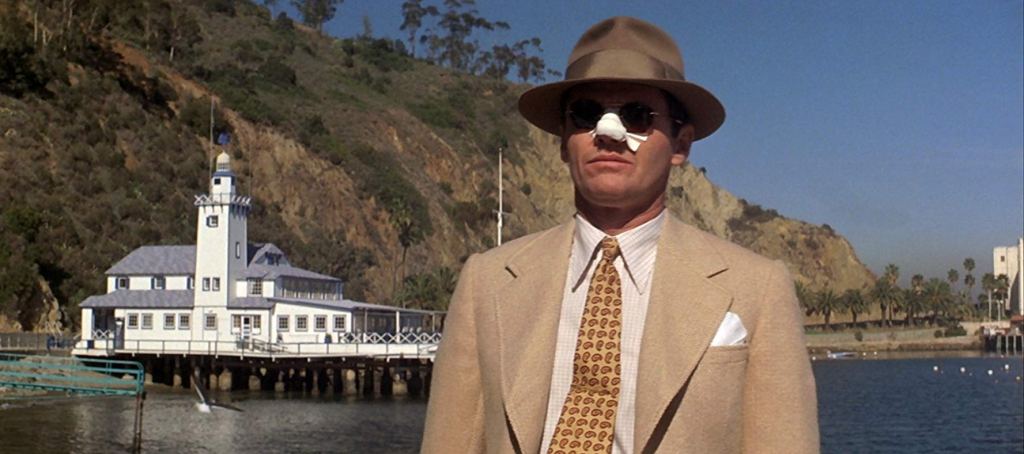
Chinatown
The obvious place to start is with the one Reeves has mentioned in the press the most: Roman Polanski and Robert Towne’s Chinatown (1974). Perhaps the textbook neo-noir—with Polanski and Towne returning to the very formula set down by the first widely recognized entry in the original film noir movement, John Huston’s The Maltese Falcon (1941)—Chinatown is a ‘30s set detective thriller in which a private dick (Jack Nicholson) gets in way over his head.
Indeed, while rich benefactors with shady histories were always a staple of noir movies in any era, Chinatown was the noir which conceded the entire system is rotten, and the corruption so intense that even the city fathers and civic leaders of Los Angeles are entangled in a web of murder and deceit. Thus, at the core of all things, the film is about Nicholson’s Jake Gittes uncovering a scheme engineered by a sinister rich power broker (played by Maltese Falcon director Huston), who is using the Los Angeles Department of Water and Power to impose a drought on the San Fernando Valley farms he wants to own.
It’s a complex scheme that ultimately taints everyone. This mirrors Pattinson’s Batman and Jeffrey Wright’s Jim Gordon realizing the murders in The Batman are connected to a scheme which implicates every victim in a conspiracy to raid the city’s supposed renewal fund (donated by Thomas Wayne) in order to enrich the mob. Sitting at the top of this web of lies is Carmine Falcone (John Turturro).
However, The Batman even more insidiously pulls from Chinatown in another way: through the surprise parentage of Selina Kyle (Zoë Kravitz). As it’s eventually revealed, Carmine is her father, not that he’s aware of it. Instead he sees a pretty face working at the Iceberg Lounge in Selina, and one whom he has lascivious designs for. This is pulled, of course, from an overarching subplot in Jeph Loeb and Tim Sale’s Batman: The Long Halloween and Batman: Dark Victory. But where do you think they got the idea?
In Chinatown, the depravity of Huston’s Noah Cross is so boundless that in one of the movie’s most shocking scenes, a judgmental Jake gets Cross’ daughter Evelyn (Faye Dunaway) to admit that she is both the sister and mother of the missing girl they’re searching for, Katherine (Belinda Palmer). That’s right, Old Man Cross raped her as a child and then passed off the incest baby born to his daughter as Evelyn’s sister!
While Carmine is not revealed to have done something quite so heinous, it’s heavily implied he raped and murdered Selina’s mother and now unknowingly lusts after his adult daughter, who in turn is in search of a friend who (like Katherine) has been taken away by Selina’s twisted rich father.
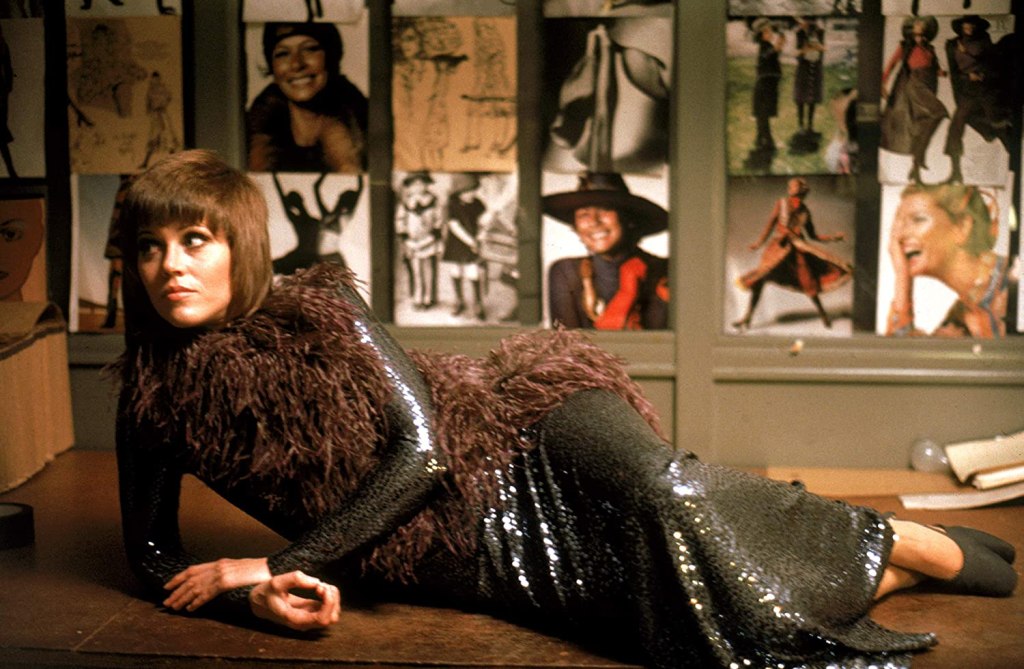
Klute
Speaking of Selina, as Reeves told Den of Geek, another significant touchstone for the co-writer and director was Alan J. Pakula’s Klute (1971). That early neo-noir deconstructed the femme fatale archetype by introducing a call girl in Jane Fonda’s Bee Daniels who was neither a courtesan with a heart of gold nor a man-eating temptress. Rather she is a woman aware of her foibles when she meets a judgmental and narrow-minded small town detective, John Klute (Donald Sutherland).
“One of the first conversations I had with Matt about the script [was how it] has so much Klute in it,” Pattinson told Den of Geek. “Their relationship is just so similar where he’s trying to neg her. And it becomes this weirdly sexy thing.”
In fact, we see more of Sutherland’s stiff and square Klute in Pattinson’s naive Batman than we see Fonda’s performance directly infused into Kravitz’s Selina. To be sure, Selina is the more worldly character in The Batman, and one with an interior life that exists outside of Batman’s war on crime. She’s initially more interested in saving a friend than helping Bruce, ultimately getting dragged into his investigation.
However, the way Pattinson’s Bruce walks around with a perpetually clinched fist, looking down on Selina and her friend for “the choices” they made, suggests a character oblivious to the world, even as he needs to rely on Selina to navigate it and survive.
“You obviously grew up with money,” she says. And while Pattinson’s Bruce lives an existence scored to grungy Nirvana music, and he wears his hair like a mid-2000s emo rocker, deep down he really is a bit of a self-righteous prig who, like Klute, is in for a rude awakening when he meets a woman of the streets who’s his better.
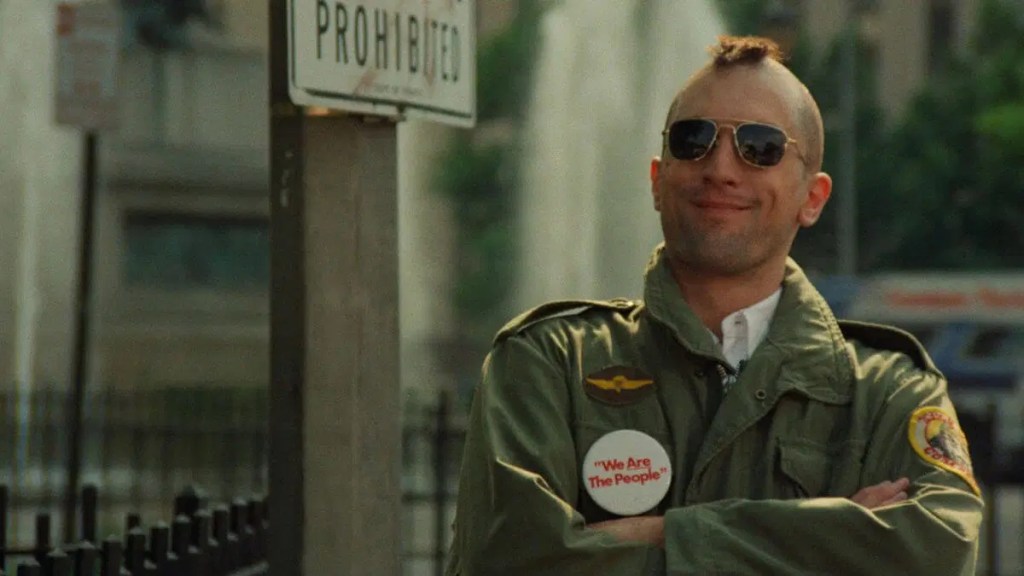
Taxi Driver
Martin Scorsese’s 1976 masterpiece, Taxi Driver, is having something of a renaissance with its influence on DC Comics adaptations as of late. While the allusions in Todd Phillips’ Joker are much more overt—to the point of bordering on theft—the grimness of Travis Bickle’s worldview is also infused into The Batman.
We get this early enough when after a bleak opening murder, the Reeves film pivots to Batman’s point-of-view. Minutes before we see Pattinson’s dark avenger, we hear his voice lamenting the hardships of his war on crime. The crusade is in its second year, and despite his best intentions, things are worse as the city remains a cesspool.
This is more or less how we’re introduced to Travis (Robert De Niro), a cab driver in the Scorsese movie with a nihilistic view of New York City.
“May 10th,” Travis narrates from his proverbial war journal. “Thank God for the rain which has helped wash away the garbage and trash off the sidewalks… Someday a real rain will come and wash all this scum off the streets.”
Bickle is, of course, an antihero at best and a villain at worst. He’s a ticking time bomb anticipating the decades of mass shooters to come (he even attempts to assassinate a politician before inadvertently becoming a local hero for a day because he killed a pedophilic pimp instead). Pattinson’s Batman is similarly lost until the closing moments of The Batman when he realizes that the Riddler’s “army” of fellow travelers—incels who make good on Bickle’s fantasies of shooting at civic leaders—also idolize him by calling themselves “Vengeance.”
In this moment, Batman realizes he could become (or is dangerously close to being) like these sad monsters. Riddler already thought they were on the same page, seeing Batman as a kindred spirit instead of a rival. And like Travis Bickle, the Riddler wears a military jacket–although one Edward Nasthon clearly didn’t earn. He also literalizes Bickle’s fantasy of “a real rain” coming and washing away all the people he considers scum.
Unlike Joker, however, The Batman’s actual protagonist sees this potential dark side of his worldview and realizes it’s selfish and toxic as hell. And he rejects it.

The French Connection/The Conversation
The Batman is a cop drama too in its own way. Of course Batman is not a cop, as the GCPD reminds him when they chase him to the top of the precinct. Nevertheless, Bruce works in the day-to-day drudgery of a detective alongside Gordon every step of the way.
There are multiple scenes of Bruce experiencing the indignities and shady side of being a detective, such as when he spies on Selina and her roommate from afar across the street, as well as Batman and Gordon trekking through the rainy mud while trying to feel out what’s going on in the Penguin’s drug operation. All the while, they watch criminals who are living better at least than Gordon, spending their nights in suits and tuxedos and drinking while Batman watches from the rain-soaked streets.
In its own way this mirrors two ‘70s neo-noirs starring Gene Hackman. The first is William Friedkin’s The French Connection (1971), in which Popeye Doyle (Hackman) and his partner Russo (Roy Scheider) spy on rich drug dealers with connections to NYC high society and the international community. The thugs live better than their pursuers. Doyle and Russo eat cheap fast food in a car while watching the French drug dealers dining on fine wine in an Italian restaurant. They also get into an ultimately killer car chase with one of their marks, just like Batman and the Penguin.
But the level of voyeurism Pattinson’s Batman partakes in, which intentionally is meant to mirror the Riddler’s M.O. from The Batman’s opening scene, seems to deliberately echo another ‘70s Hackman picture, Francis Ford Coppola’s The Conversation (1974). In that movie, Hackman plays a paranoid surveillance expert who spies on others for a living, beginning with a couple he has mics and cameras on in an opening scene—a couple who is soon murdered.
While Batman is never culpable in the murders of anyone, he nonetheless is the morally ambiguous spy who watches Selina change in her closet, the friend who is ultimately slaughtered, and even one ups the surveillance technology in The Conversation by a few decades since he’s literally able to see the seedy side of the Iceberg Lounge through Selina’s eyes—including listening to a corrupt district attorney who will die later that night.

Dirty Harry
Speaking of creepy spying, the opening scene in The Batman is a direct homage to Dirty Harry (1971). While we hesitate to refer to this conservative fantasy (or what some might call “copoganda”) as a noir movie, Don Siegel’s Dirty Harry pulled from a real life horror that also inspired Reeves: the Zodiac Killer’s reign of terror in San Francisco. As we detailed here, this ‘70s action movie came out during a period when the Zodiac was still taunting the press and police about his murders, and the film’s “Scorpio” killer (which is a zodiac sign) is clearly meant to mirror that grisly media story, right down to making good on the serial killer’s empty threat to hijack a school bus.
In Dirty Harry’s first scene, we watch Andrew Robinson’s killer spy lust after a young woman about to dive onto a rooftop swimming pool in the San Francisco Bay Area. He is peering through a sniper rifle’s scope, which the camera also sees through. He then murders her with a single bullet.
The Batman begins much the same way with the Riddler spying through an undisclosed scope, watching the Gotham City mayor he’s about to slaughter.
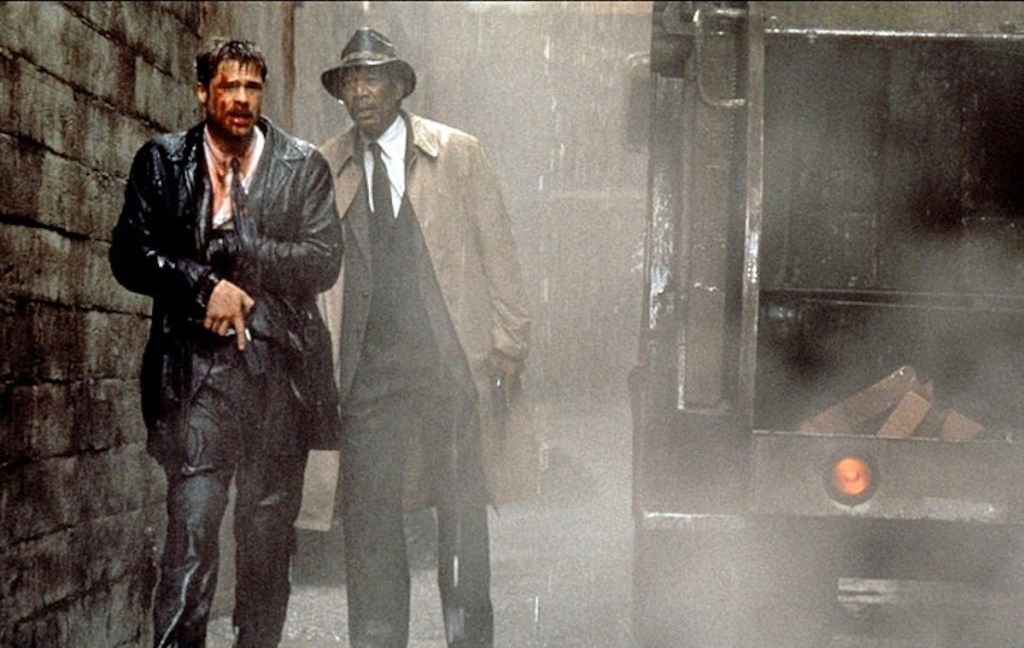
Seven
To jump ahead a few decades, Reeves also seems to be drawn to several ‘90s neo-noirs—none more so than Fincher’s Seven. Like The Batman, Seven largely focuses on a police investigation into a series of grisly murders perpetrated by a serial killer who likes to leave taunting messages for the police.
The investigators are an old and grizzled detective on the force (Morgan Freeman) and a young hot shot who mistakenly believes he knows how screwed up this world can get (Brad Pitt). It doesn’t take a mustache to deduce that the dynamic between Wright’s Jim Gordon and Pattinson’s Batman is directly modeled after this, with the Riddler being their very own John Doe who leaves ritualistic crime scenes in his wake.
More than just plotting similarities, however, Seven’s visual aesthetic permeates the look of The Batman. Both movies take place in rain soaked urban nightmares with an interest more in the tall grass and abandoned asphalt in the sticks than the city’s glossy high-rises. They’re set in a wonderland of misery, and where the killer always has the upper-hand, even after he’s let himself be arrested following his latest murder.
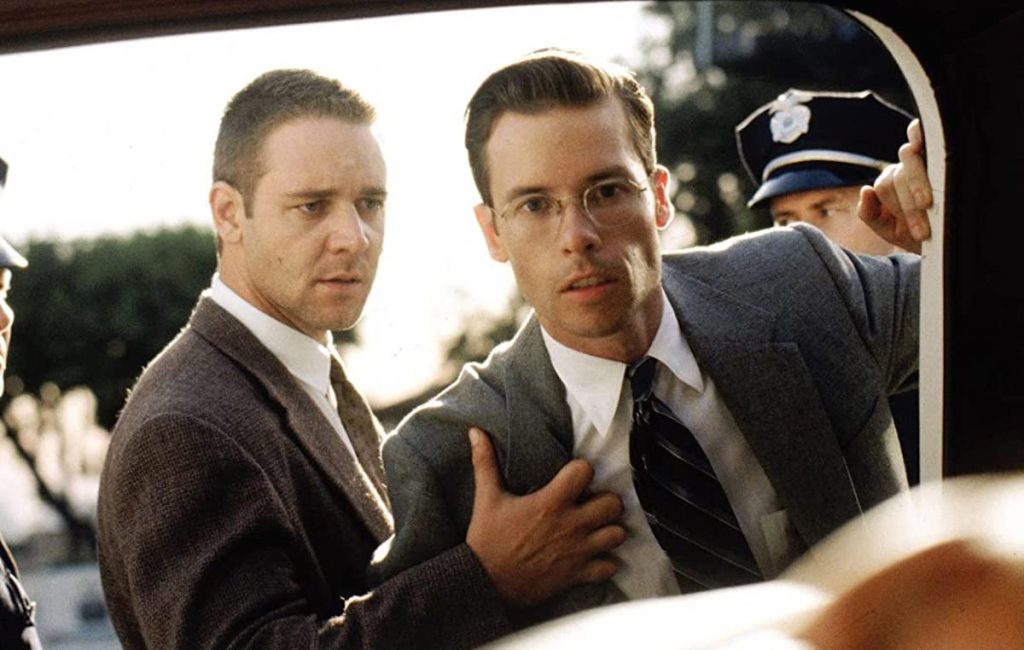
L.A. Confidential
This one is a fainter comparison, but Curtis Hanson’s seminal 1997 noir, L.A. Confidential, is about as epic as the genre can get wherein three disparate and eminently flawed police detectives find their separate cases and corruptions of choice converge on a single case that implicates the very leadership of the Los Angeles Police Department in a scheme involving mobsters, drugs, prostitution, and murder.
The Batman similarly has several threads—Gordon’s pursuit of the Riddler, Selina’s pursuit of Carmine Falcone, the disappearance of her best friend, and finally Bruce’s own family history—which converge in a massive case that entwines GCPD leadership with mobsters, drugs, and murder. Hmm.

